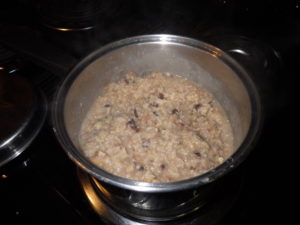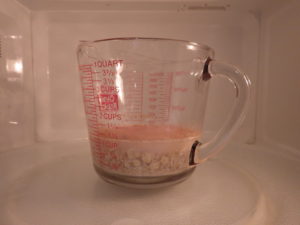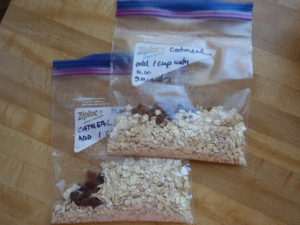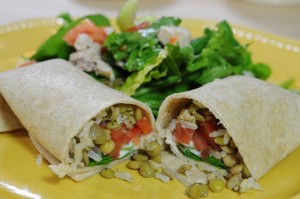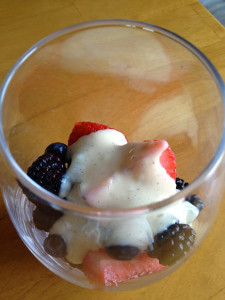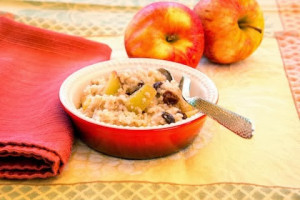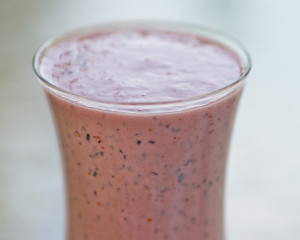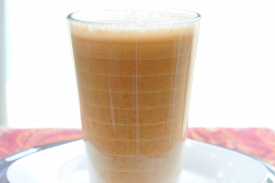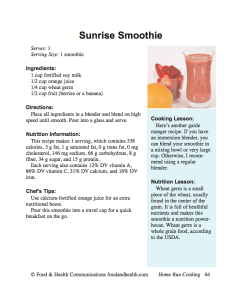How are you doing with making small changes to your eating pattern that can make a difference in your health? One of the ideas in my New Year’s resolution article was to “eat more oatmeal.” Did you try it? How are you doing?
The concept behind that little goal is to have oatmeal instead of processed cereal. There are several things going on here: saving money by not buying expensive boxes of cereal, knowing exactly what you’re adding to the cereal, and knowing that oatmeal is good for you.
How good? Well, oatmeal is naturally low in fat and sodium and high in fiber. It’s also a good source of iron and provides protein, B vitamins, and other minerals. Oatmeal is an excellent source of whole grains too. Eating oats may even help protect against high blood cholesterol, diabetes, high blood pressure, and obesity.
There used to only be a couple different types of oatmeal available, but now the choices are many. All this variety can get a little confusing, so let me clear some things up. All types of oatmeal start with oat groats, which are oat grains without the hulls. Choose your oatmeal based on the time you have to prepare it, the texture you prefer, and any added ingredients you may or may not want.
- Scotch or Irish oats have been cut but not rolled. They have a hearty texture with a nutty flavor. The traditional version can take up to 30 minutes to cook, though there are quicker-cooking options.
- Steel-cut oats are whole oat groats that have been sliced into pieces. These cook in about 20 minutes with a chewy, coarse texture.
- Rolled or old-fashioned oats are whole oat groats that are steamed and rolled to flatten them; they cook in about five to ten minutes.
- Quick oats are rolled oats that have been cut into even smaller pieces. These cook in about one to five minutes.
- Instant oats are whole oat groats that are rolled thinner and cut finer than the others. Since they’re also pre-cooked, you can just add boiling water or heat them in the microwave for about 90 seconds.
According the USDA Nutrient Database, all plain oatmeal types are about the same when it comes to nutrients. One cup of cooked (with water and no salt) old-fashioned or quick oats has 166 calories, 3.5 grams of fat, no sodium, 4 grams of dietary fiber, and less than a gram of sugar. Watch out for instant oatmeal packets, since most of them have added flavors which usually add calories, sodium, and sugars. To steer clear of these, keep an eye on the ingredients list and Nutrition Facts label.
You can make oatmeal in the microwave as quickly as you can pour a bowl of cereal and milk.
To try it for yourself, don’t miss this edition of one of Chef Judy’s recipes:
Ingredients:
- 1/2 cup old-fashioned oatmeal
- 1 cup water
- 1/4 teaspoon ground cinnamon
Directions:
- Place all ingredients in a large glass or ceramic bowl. Microwave on high for 3 minutes. The big key here is to make sure you have a large bowl, so that it won’t overflow! I like to make it in a 1 quart measuring cup and then just eat out of the cup. Voilà! Only one dish to clean.
- Add your own skim milk, fruit, nuts, raisins, dried cranberries, and spices to the cooked oatmeal — you are in control. To save even more time in the morning, make your own little “instant oatmeal” packs, adding spices or dried fruits. That way, all you’ll need to do in the morning is add water, microwave, and eat!
And what if you don’t think that you have time to make oatmeal every day? My solution is to make a large batch of oatmeal over the weekend and reheat single servings quickly in the microwave. That way, you’ll have a speedy meal without losing any of its nutritional benefits. Cooked oatmeal will keep in the refrigerator for up to a week and makes a quick and healthful breakfast.
By Cheryle Jones Syracuse, MS, Professor Emeritus at The Ohio State University
Here are a few of the other top breakfast resources, just for you!



